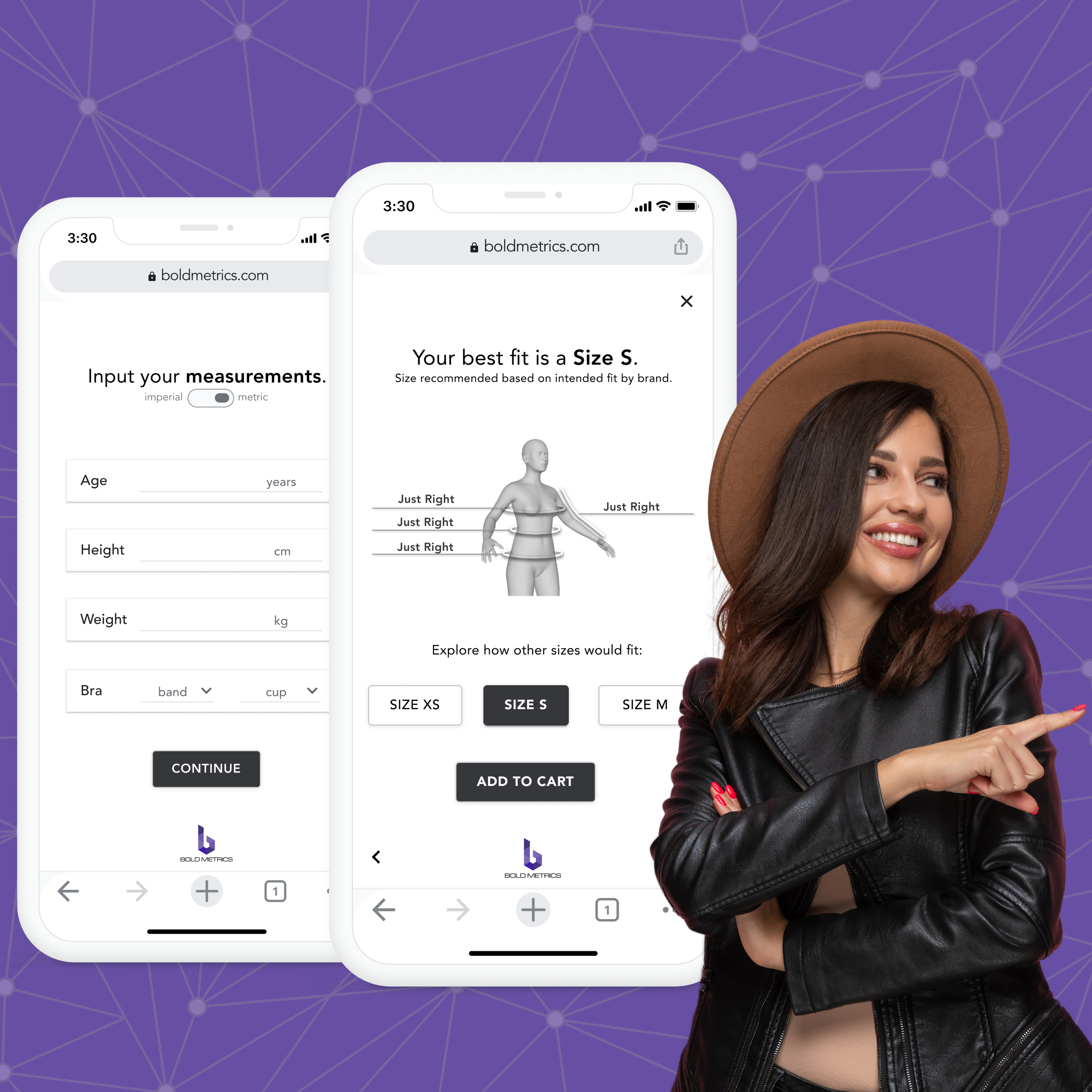%20(9)-1-2.webp)
Make Shopping for Kids' Clothing Simple with AI Sizing Technology
With a new school year upon us, it’s time for parents to start adding to their children’s wardrobe and replacing the old, worn, now-too-small clothes from last year. When it comes to buying clothes for kids, it’s hard to keep up with growth spurts and many parents — especially in today’s economy — are being choosier about how much money they spend on clothing and how many brand-new items they buy.1 As an apparel brand with a children’s line, how do you create a positive and hassle-free experience for parents and their kids? We’re glad you asked.
Prioritizing Fit and Sizing is Key
Finding the right fit for a growing child is one of the most difficult issues — if not the most difficult issue — that parents face when buying kids’ clothing. The pair of jeans that fit in September is not likely to fit by March, so parents need the right size for their child so they can choose if they want the perfect fit for now or a larger size with room to grow.
But who wants to bust out the measuring tape to ensure the perfect fit? Measurements from skilled tailors can vary by person to person and even among the same person from measurement to measurement. Human error is unavoidable. Add to it a child who can’t sit still or is sensitive to touch and parents are back to guessing.
Size charts and brand comparisons can help, but they’re only helping parents make their best guess based on current measurements or how a competitor brand currently fits. Not to mention, you now have a competitor brand on your site who may be running a back-to-school sale that you just inadvertently reminded your shoppers of.
That’s where AI sizing technology comes in. By filling out a simple survey with information that every parent knows (age, height, weight, shoe size), advanced AI algorithms can calculate 50+ body measurements to give a highly accurate size recommendation. From there, parents can decide what works best for their child and choose to either go with the recommended best size or go a size up.
Helping shoppers find their best fit consistently results in higher confidence that the product will fit — which boosts conversion and average order value — fewer returns because the clothing fits as expected, and higher customer loyalty.
Use Body Data to Create Better-Fitting Clothes
With AI sizing solutions like Bold Metrics’ Smart Size Chart, a digital twin is created every time a shopper inputs information into a survey. The digital twin allows a brand to keep track of that shopper’s measurements and purchase and return history without collecting any Personally identifiable information (PII).
This data can then be used to optimize the production process and improve on designs and sizing. Through apparel analytics, brands can compare their fit model data to actual customer body data, revealing any gaps.
For example, while designers may have thought that the average waist size of their customers for a small is a certain size, the data may show that customers who buy a small more often than not return it and buy a medium. Their actual waist size might be an inch or more off from the predicted fit model waist size. Designers can take this information and adjust sizing in future designs to decrease returns and waste and increase customer satisfaction.
Inclusivity is Important, Too
Customer body data plays a crucial role in promoting size inclusivity within kids' clothing brands. By analyzing the data, brands can identify patterns and trends related to the diversity of children's body shapes and sizes. This insight enables you to develop a size range that caters to a broader spectrum of children, including those with different body types, heights, and proportions.
But size inclusivity goes beyond simply offering a wide range of sizes; it involves understanding the unique fit needs of various body types. With accurate body data, kids' clothing brands can design and tailor garments that fit well on different body shapes, ensuring that every child feels comfortable and confident in their clothing.
Gender inclusivity is becoming the norm, so it’s less important to determine whether a product is “for girls” or “for boys,” but more important to understand the body data of the kids that are wearing a particular item. By leveraging customer body data, brands can move beyond the traditional and outdated one-size-fits-all approach.
Bracketing returns is a common issue in eCommerce where customers buy multiple sizes of the same item and return the ones that don't fit. By using digital twin software and apparel analytics, brands can significantly reduce the rate of bracketing returns by providing more accurate sizing information, leading to higher customer satisfaction and fewer returns.
Bold Metrics helps well-known brands and retailers around the world connect shoppers to their best fit. From Canada Goose to French Toast, our AI sizing solutions have been proven to boost conversion and AOV, reduce returns, and increase customer confidence.Our innovative kids sizing technology ensures that brands can offer perfect fits for children, enhancing the shopping experience for parents and kids alike.
Source: 1. Lagerling, J. 2022 Reuse Report: Family Edition. Mercari. Published November 28, 2022.


.png?width=600&height=408&name=march%202023%20-%20french%20toast%20(1).png)

.png?width=1080&height=1080&name=Bold%20Metrics%E2%80%99%20digital%20twin%20technology%20helps%20some%20of%20the%20worlds%20biggest%20bands%20increase%20conversion%20and%20AOV%2c%20reduce%20returns%2c%20optimize%20their%20customer%20experience%2c%20and%20boost%20brand%20loyalty.%20(2).png)

%20(12).png?width=606&height=303&name=CORRECT%20Hubspot%20Blog%20post%20featured%20image%20(1024%20%C3%97%20512%20px)%20(12).png)





